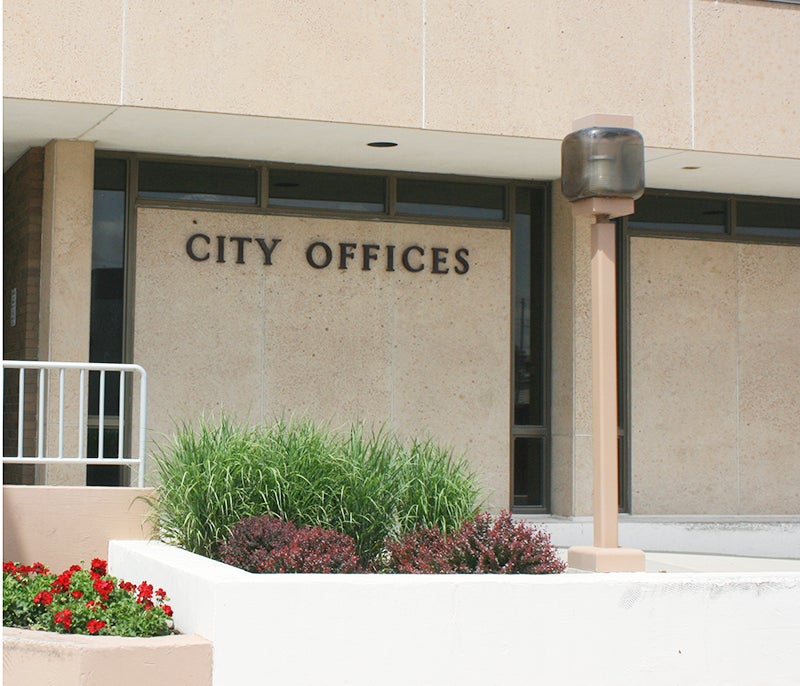‘Dire’ conditions threaten to overwhelm care system
Published 2:01 pm Thursday, November 19, 2020
|
Getting your Trinity Audio player ready...
|
The COVID-19 surge is threatening to overwhelm Minnesota’s health care system, Gov. Tim Walz and executives with two of the state’s major health networks warned Thursday as they pleaded with Minnesotans to take personal responsibility to stem the disease’s spread.
Current conditions are “very dire,” Dr. Penny Wheeler, CEO of Allina Health, said in an afternoon briefing with reporters. The virus is sickening health care workers — it’s sidelined 800 Allina workers — and the state’s health system is “getting perilously close” to being unable to care for everyone who needs it, she said.
Wheeler begged Minnesotans to wear masks, socially distance and take other measures to reduce COVID-19’s rapid spread. “We have to take a hit for the time being to care for one another.”
She and Dr. Cindy Firkins Smith, CEO of CarrisHealth CentraCare in Willmar, said the rising numbers of health care workers unable to work due in some way because of COVID-19 had put an unprecedented strain on their systems and that they needed people to follow state guidelines and stay home for Thanksgiving to avoid spreading the virus.
“The people working in the hospital not only don’t get to celebrate with the people they love, they’re going to be watching people die that day,” said Smith. “And they don’t want to watch you die at Christmas. So please don’t (gather). Just this year, please don’t.”
Their pleas came hours after the state Health Department confirmed 72 more deaths, a single-day high in the pandemic, five more than Wednesday’s record.
The current death counts were “unimaginable” only a few weeks ago but may be the norm in the coming weeks, Walz told reporters.
‘Dangerous point’
The latest figures come a day after the governor rolled out new curbs intended to ease the spike in COVID-19 caseloads, hospitalizations and deaths that are threatening now to overwhelm the state’s health care system.
“We’re at a dangerous point in this pandemic,” Walz told Minnesotans Wednesday night. “How we act, and how this virus moves, will have huge implications on the number of people who will be hospitalized and, ultimately, those who will lose their lives.”
Hospitalizations continue to climb, with the seven-day new admissions trend at a near-record. More than 1,700 people are in Minnesota hospitals because of COVID-19 with about 350 needing intensive care. The numbers have leaped since Nov. 1.
Smith, the west-central Minnesota hospital executive, said more than 10 percent of her 12,000 rural Minnesota workforce was out recently because of COVID-19, either having to quarantine because of illness or exposure, or because they have to take care of family members.
“We don’t have anybody to replace them,” she said. “There’s no calling New York. There’s no calling Texas. There’s no calling the Twin Cities. There’s no calling anywhere to get help.”
Care workers, she added, are increasingly frustrated by the unwillingness of Minnesotans to take precautions.
“It’s heartbreaking for health care workers to finish an exhausting workday only to stop at the grocery store and see people not wearing a mask,” she said.
Her Willmar hospital was unable to accept any new patients during the first 11 days of November because of the surge of COVID-19 patients, she added. Staffers had to find other facilities who could take people who needed care.
“This is a situation that hospitals across Minnesota are facing every day and working desperately to avoid.
Overall, the numbers continue to paint a disturbing picture of a rapidly worsening outbreak in Minnesota not limited to just one region or demographic group, as was the case earlier in the pandemic.
Of the 249,906 confirmed or probable cases identified to date, about 79 percent have recovered to the point they no longer need to be isolated.
The deaths reported Thursday raised Minnesota’s toll to 3,082. Among those who’ve died, about 69 percent had been living in long-term care or assisted living facilities; most had underlying health problems.
Caseloads climbing across age groups
New cases have been spiking over the past three weeks in all age groups.
People in their 20s still make up the age bracket with the state’s largest number of confirmed cases — more than 50,000 since the pandemic began, including nearly 28,000 among people ages 20 to 24.
The number of high school-age children confirmed with the disease has also grown, with nearly 20,000 total cases among children ages 15 to 19 since the pandemic began.
The numbers help explain why experts remain particularly concerned about teens and young adults as spreaders of the virus.
Although less likely to feel the worst effects of the disease and end up hospitalized, experts worry youth and young adults will spread it to grandparents and other vulnerable populations.
It’s especially concerning because people can have the coronavirus and spread COVID-19 when they don’t have symptoms.
Walz said recently the state has data showing infection rates rising around bar and restaurant activity after 9 p.m. among young adults, noting that people who have the virus but don’t have symptoms are unwittingly spreading it.
Virus surges in swaths of rural Minnesota
The state Health Department’s latest data shows the virus cutting across all of Minnesota.
Regionally, central and northern Minnesota have driven much of the recent increase in new cases while Hennepin and Ramsey counties show some of the slowest case growth in the state.
The fastest growing outbreaks remain largely along the state’s western border with the Dakotas, where the virus is spreading unchecked. But new cases are rising everywhere in Minnesota.
Collectively, rural areas continue to report the most new COVID-19 cases per capita.
Northern Minnesota, once the region least affected by the disease, has also seen its caseload grow dramatically in recent weeks.
Latino cases climb
In Minnesota and across the country, COVID-19 has hit communities of color disproportionately hard in both cases and deaths. That’s been especially true for Minnesotans of Hispanic descent for much of the pandemic.
Distrust of the government, together with deeply rooted health and economic disparities, have hampered efforts to boost testing among communities of color, officials say, especially among unauthorized immigrants who fear their personal information may be used to deport them.
Similar trends hold true for Minnesota’s Indigenous residents. Counts among Indigenous people jumped in October relative to population.
Cases among all races and ethnicities continue to rise, although currently the growth is slowest among Black Minnesotans, who reported the most new COVID-19 cases per capita for much of the spring and summer.
‘The ground is really shifting’
State officials on Monday pleaded with Minnesotans not to gather for Thanksgiving outside their immediate household. They also asked college students to consider not going home for the holiday. (The federal Centers for Disease Prevention and Control on Thursday also called on people not to travel over Thanksgiving.)
That advice was a change from the state Health Department’s prior recommendations. The agency last week said it’d be OK for people to have gatherings up to 10 from three households.
Now, though, the disease’s rampant, accelerating spread is forcing the hand of public health officials. By Thanksgiving, Minnesota could be seeing more than 10,000 new cases reported daily, Health Commissioner Malcolm told reporters.
“The ground is really shifting under our feet and we need to adapt quickly,” she said.
Malcolm reaffirmed that on Wednesday night following Walz’s address on the new restrictions. Left unchecked one model suggests Minnesota could hit 20,000 new cases per day by the start of the new year, the commissioner said. That’s nearly three times the current seven-day average.
“Two weeks ago, I thought a 5,000-case day was horrific,” Malcolm said. “Now, that looks like a good day.”
‘Darkest part of the pandemic’
Malcolm, Walz and other officials have pleaded with Minnesotans over the past month to take personal responsibility to reduce the disease’s spread by wearing masks in social gathering places, socially distancing and staying home if you don’t feel well.
The uncontrolled spread is being driven now by Minnesotans’ informal gatherings and get-togethers with family and friends where it’s transmitted unknowingly by people who have the virus but do not have symptoms, officials say.
“Our behavior is driving this … literally thousands and thousands of small decisions happening around Minnesota that are the issue here,” Malcolm said recently.
There’s increasing concern about the ability of hospitals to handle more. Staffing is becoming a challenge as more health care workers get sick.
COVID-19 is taking a toll on hospital staffing, making care more difficult to provide, even as demand grows. The trends indicate the situation will get much worse in the near future Malcolm told MPR News early Monday.
“We know that hospitalizations lag by about two weeks from, or possibly more than two weeks behind the cases,” she added. “So the hospitalizations we’re seeing today are based on cases that were one-third of what we’re seeing today.”




